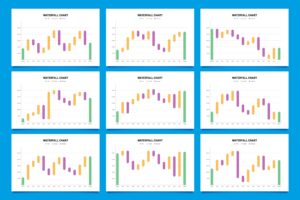Trading futures offers an efficient route into the global financial markets. It means agreeing to trade an asset later at a fixed current price. You can trade both rising and falling markets using futures with flexibility. However, achieving consistent futures trading success requires a deep understanding, a strong mindset, and a practical approach. In this article, we’ll explore seven genuine ways to profit big in futures trading.
Table of Contents
Futures Trading: 7 Ways to Win Big
1. Understand the Basics of Futures Trading
Futures trading allows you to speculate on the future price of various assets. These include commodities like gold and oil, financial indexes, and even cryptocurrencies. Futures differ from stocks—they expire, unlike shares you hold long-term. This means timing is crucial.
Every trader must understand the basic terms, such as margin, leverage, and settlement. Opening a futures trade needs a set amount of initial capital, called margin. Small capital can control bigger trades in futures through built-in leverage. Higher profits are possible with leverage, but risk levels also climb. So, understanding how leverage affects your trade is essential.
Technical analysis tools are usually built into futures trading platforms. Charts, indicators, and historical data are essential for spotting trends. A good grasp of market sentiment, along with technical patterns, builds a solid foundation. Use demo trading first to practice before risking actual funds.
2. Create and Follow a Solid Trading Plan
Successful futures trading does not happen by chance. It begins with a clear, well-defined plan. You must know when to enter a trade, where to place stop-loss orders, and what your target profit is. These elements create a trading framework that reduces emotional decision-making.
A strong trading plan includes risk-reward ratios. For example, risking 1 part to make 3 parts (1:3 ratio) is commonly used. This approach protects your capital and keeps you in the game longer. Always stick to your plan. Changing decisions mid-trade often leads to losses.
Transitioning from impulsive to planned trades builds discipline. Over time, following your plan helps you understand your strengths and weaknesses. This self-awareness leads to continuous improvement.
Also Read: Swing Trading
3. Use Proper Risk Management Strategies
Many traders fail not because of wrong predictions, but due to poor risk management. Futures trading leverage boosts returns—and also potential losses. Managing risk is not just about placing stop-losses. It also includes deciding how much of your capital you’re willing to risk on each trade.
Risk only 1%–2% per trade, as recommended by professional traders. Keeping trade risk low protects your capital from major losses. It also keeps your emotions in check. Consistency in position sizing is vital.
Avoid revenge trading. This happens when traders chase losses with bigger positions. Take a moment, assess your plan, and trade again with a clear mind. Emotional control is just as important as technical skill in futures trading success.
Also Read: Positional Trading
4. Apply Technical Analysis to Guide Your Trades
Use technical indicators and price charts to support every trading choice. Technical analysis helps you identify entry and exit points with higher accuracy. MACD, RSI, Bollinger Bands, and moving averages are commonly used by traders. Learning how to combine these tools gives you an edge.
Patterns like head and shoulders, triangles, and flags can signal strong future moves. Volume analysis adds another layer of insight. If price moves up with high volume, the trend is considered strong.
Backtesting your strategy on historical data can boost confidence. It shows how your system would have performed in different market conditions. Historical returns don’t promise similar outcomes in future markets. Still, it provides a helpful guide.
Also Read: Colour Trading Magic
5. Build Emotional Discipline for Consistent Results
Mental discipline counts for more than strategy in trading success. Emotional reactions like greed or fear can hurt your trading judgment. The market will test your patience and discipline regularly.
Create a routine that prepares you mentally before trading. This could include reviewing market news, checking charts, and writing down your goals for the session. Try journaling or meditation to manage emotional stress while trading.
Don’t panic during losses—follow your trading plan without emotional changes. Trade smaller amounts and follow your strategy without losing focus. Emotional control improves decision-making and long-term profitability.
6. Commit to Lifelong Learning in Futures Trading
Markets change constantly. Market conditions change; past strategies might fail now. Continuous learning ensures you adapt and improve. Continue learning by joining communities, following experts, and studying trading materials.
Track your trades in a journal. Record your strategy, emotional state, and trade outcome. Reviewing this journal weekly reveals patterns you can fix or repeat.
Greater knowledge builds stronger confidence and readiness for trading. Futures trading success is not about predicting every move. It’s about being consistent and learning from every experience.
Also Read: Trading Tick
7. Choose the Right Platform and Tools
The right platform impacts your trading experience greatly. Look for features like real-time data, customizable charts, low fees, and fast execution. Mobile access and user-friendly interfaces also help.
Some platforms offer built-in education, community forums, and market insights. Select a platform that fits your personal trading objectives. Reliable customer support is another must-have feature.
Using tools like economic calendars and news feeds helps you stay informed. Economic events often trigger price movements. Knowing market shifts helps you modify strategies as needed.
Also Read: Best Timeframe for Trading
Frequently Asked Questions (FAQ)
What is futures trading in simple words?
A futures contract sets a fixed price for buying or selling later.
What are the first steps for beginners in futures trading?
Is futures trading risky?
Leverage increases risk in futures trading, especially for those just starting out. Proper risk management is key.
Is regular profit possible in futures trading with the right discipline?
Discipline, clear planning, and constant growth are key to long-term success.
What’s the minimum capital required to begin futures trading?
You can start with as little as $1,000, but more capital offers flexibility.
What are some good strategies for futures trading?
Trend-following, breakout, and mean reversion strategies are commonly used.
How often should I trade futures?
Enter trades only when your plan shows strong probability.
Which platform is best for futures trading?
Choose a platform with real-time data, low fees, and strong support.
Can I trade futures part-time?
Many traders start part-time, then move into full-time trading gradually.
How do futures differ from options in trading terms?
Futures are obligations, while options give the right but not the obligation to trade.
Also Read: What are Sensex and Nifty
Final Thoughts
Futures trading is a skill that combines strategy, discipline, and continuous learning. With the right tools and mindset, consistent success becomes achievable. Stick to a plan, manage your risks, and grow from each experience. Tiny refinements in futures trading often lead to major long-term gains.
Trading success comes from consistency, not chasing one massive gain. It’s about consistency, discipline, and continuous improvement.
Also Read: Smart Money Concept







